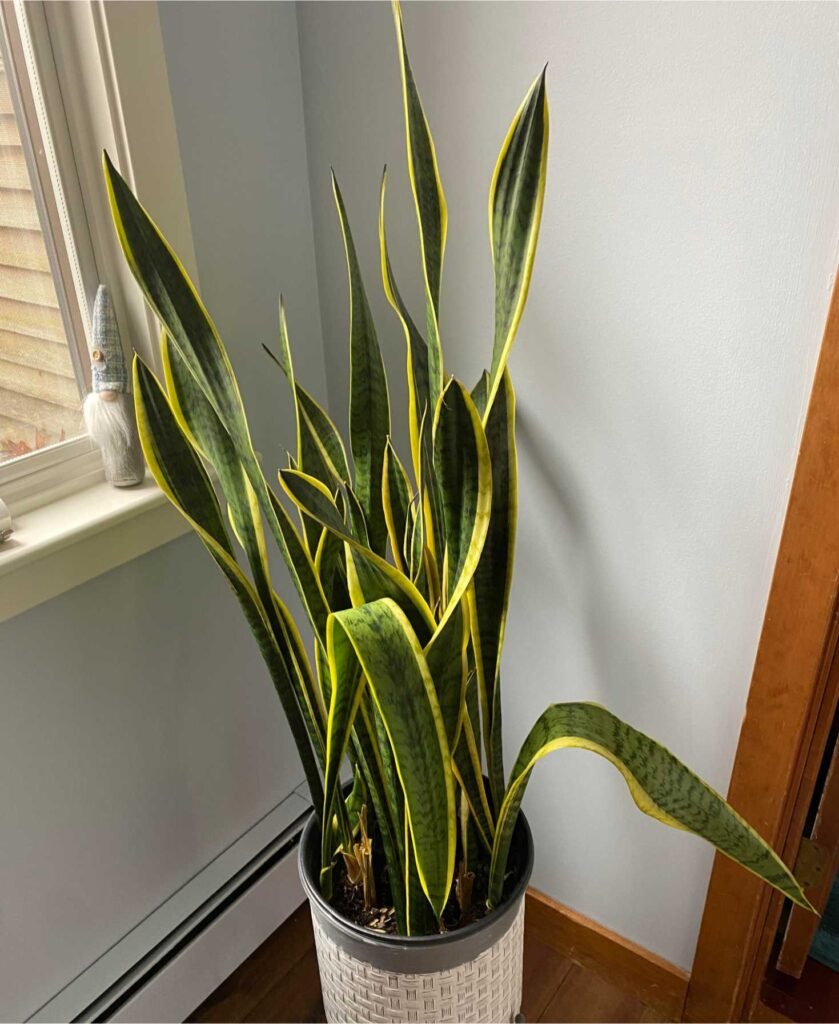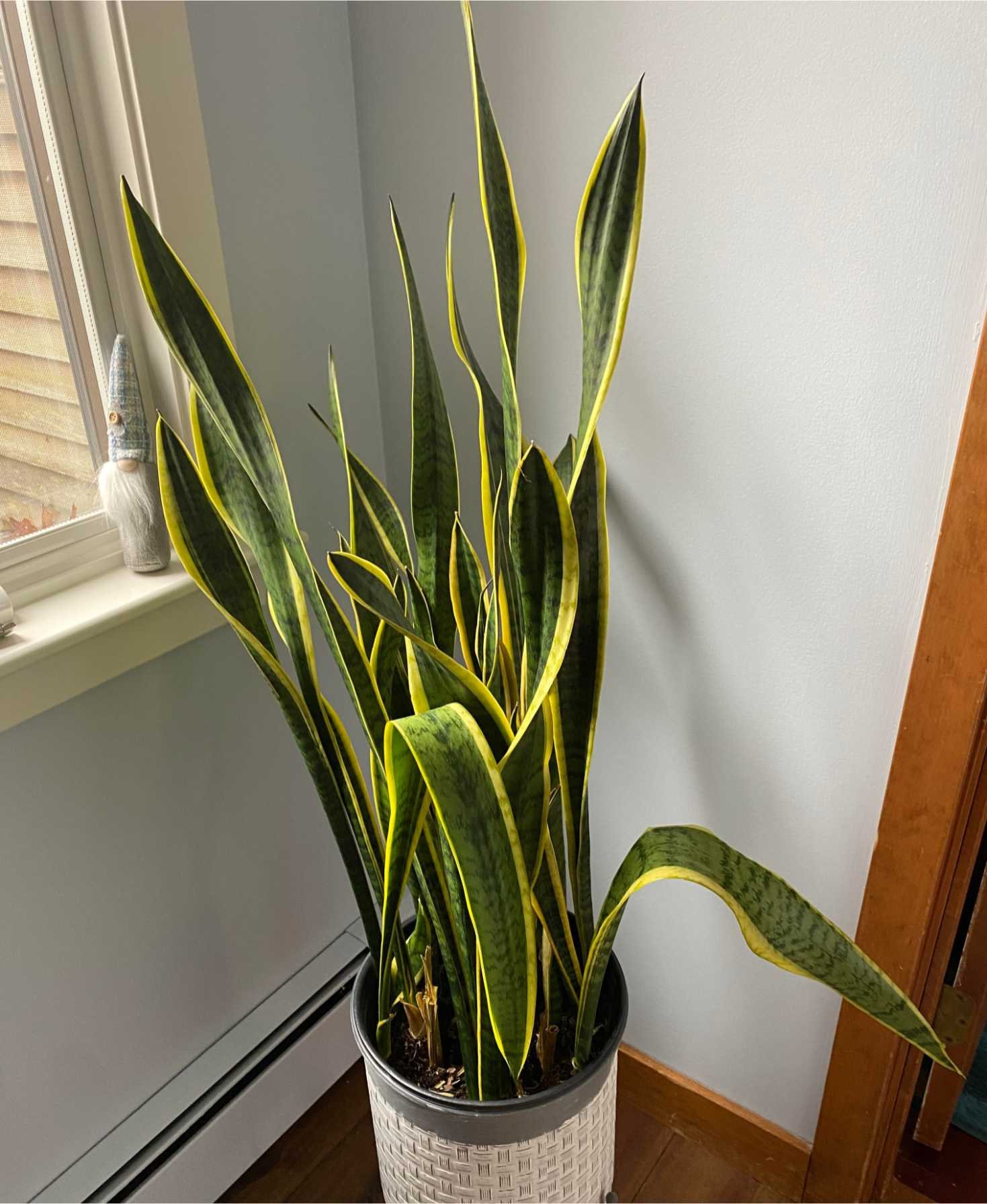In the ever-evolving world of indoor gardening and wellness, snake plants (Sansevieria) have emerged as a favorite houseplant for their ease of care, resilience, and visual appeal.
Beyond their ability to survive in low light and infrequent watering, snake plants are often touted for their air-purifying qualities. But one intriguing claim has sparked curiosity and debate among plant enthusiasts: Do snake plants make you sleepy?
If you’ve ever wondered whether having a snake plant in your bedroom could affect your sleep quality, you’re not alone. The conversation around snake plants and sleep has roots in science, folklore, and personal experiences.
In this blog post, we’ll explore the evidence, the myths, and the potential impact snake plants may have on your sleep. We’ll take a humanistic approach, considering not just scientific data but also the emotional and psychological connection people have with plants.
By the end of this piece, you’ll have a well-rounded understanding of whether your beloved snake plant could be your new sleep ally or simply a stylish decor element.

Table of Contents
Understanding the Snake Plant
Before diving into the effects snake plants may have on sleep, let’s first understand what they are.
The snake plant, scientifically known as Sansevieria trifasciata, is also commonly referred to as “mother-in-law’s tongue” due to its long, pointed leaves.
This hardy plant is native to West Africa and thrives in a variety of conditions, making it a popular choice for both beginners and experienced plant lovers.
Snake plants are part of the Asparagaceae family and are known for their unique ability to survive with minimal water and sunlight. Their tall, upright leaves are often dark green with lighter stripes, giving them a striking appearance that complements modern home interiors.
The Science Behind Snake Plants and Air Quality
One of the reasons snake plants have gained a reputation for aiding sleep is their air-purifying ability. In 1989, NASA conducted a study to identify plants that could improve indoor air quality by removing toxins.
The study revealed that snake plants are particularly effective at filtering out harmful chemicals like benzene, formaldehyde, and trichloroethylene.
But what does air purification have to do with sleep?
Clean air is fundamental for good sleep. When you breathe in clean, oxygen-rich air, your body can relax more effectively, and your brain can function optimally. Snake plants are unique among houseplants because they perform photosynthesis differently.
While most plants release carbon dioxide at night, snake plants continue to release oxygen. This nighttime oxygen production is one reason many people place snake plants in their bedrooms, hoping to improve air quality and, by extension, sleep quality.
How Snake Plants Release Oxygen at Night
Snake plants are what’s known as CAM (Crassulacean Acid Metabolism) plants. CAM plants are specially adapted to hot and arid climates.
Instead of photosynthesizing during the day like most plants, they open their stomata (tiny pores on their leaves) at night to reduce water loss. This process allows them to absorb carbon dioxide and release oxygen while you sleep.
The idea is that having a snake plant in your bedroom means you’ll benefit from this extra nighttime oxygen boost, which could theoretically promote better sleep.
Can Snake Plants Really Make You Sleepy?
Now that we understand how snake plants purify the air and release oxygen at night, let’s address the big question: Do snake plants actually make you sleepy?
The simple answer is: not directly.
Snake plants don’t contain any sedative properties or chemicals that induce sleep. They won’t cause drowsiness or make you feel sleepy in the same way a cup of chamomile tea or a dose of melatonin might.
However, their ability to improve air quality and create a calming environment can indirectly support better sleep. Let’s break down the potential mechanisms:
1. Improved Air Quality = Better Sleep
Airborne pollutants like formaldehyde, benzene, and xylene can irritate the respiratory system, causing coughing, sneezing, and general discomfort. Poor air quality can lead to sleep disturbances, especially for people with asthma, allergies, or other respiratory issues.
By removing these toxins from the air, snake plants may create a healthier sleeping environment. When you breathe easier, your body can relax more deeply, facilitating better sleep.
2. Psychological and Emotional Benefits
Beyond their physical air-purifying properties, snake plants (and houseplants in general) offer psychological benefits. Studies have shown that interacting with plants or simply having them in your environment can reduce stress and promote a sense of well-being.
A clutter-free, nature-filled bedroom can help signal to your brain that it’s time to wind down. The mere presence of a healthy, green plant can contribute to a sense of calm, which is crucial for good sleep hygiene.
3. Humidity Regulation
Snake plants can also help maintain indoor humidity levels. By releasing small amounts of moisture through their leaves (a process called transpiration), they can prevent the air in your bedroom from becoming too dry.
Balanced humidity is important for keeping your nasal passages clear and comfortable, which supports uninterrupted sleep.
Read: Where to Place Snake Plant in Your Home.
Snake Plants vs. Other Bedroom Plants
While snake plants are fantastic, they’re not the only plants known for their air-purifying and sleep-supporting qualities. Here’s a quick comparison of some popular bedroom plants:
- Lavender: Known for its calming scent, lavender can reduce anxiety and promote relaxation, which may help you fall asleep faster.
- Aloe Vera: Like the snake plant, aloe vera releases oxygen at night and helps purify the air.
- Peace Lily: This beautiful plant filters toxins and increases humidity, making it ideal for bedrooms with dry air.
- Spider Plant: Another low-maintenance option that purifies air and removes pollutants.
While each of these plants offers unique benefits, snake plants stand out for their ease of care, resilience, and nighttime oxygen production.
Myths and Misconceptions About Snake Plants
As with any popular trend, misconceptions can arise. Here are a few common myths about snake plants:
1. Snake Plants Are Toxic to Humans
Snake plants are mildly toxic if ingested in large quantities. The leaves contain saponins, which can cause nausea, vomiting, and diarrhea.
However, they’re not considered dangerous unless consumed in significant amounts. For adults who simply enjoy the plant’s presence, there’s no cause for concern. If you have pets or small children, keep the plant out of reach.
2. Snake Plants Absorb Negative Energy
Some believe snake plants have spiritual properties, absorbing negative energy and promoting positive vibes. While this isn’t backed by science, many people find comfort and peace in this belief.
The power of suggestion and emotional connection to nature can have real psychological benefits.
3. Snake Plants Are Bad Luck
In some cultures, snake plants are thought to bring bad luck because of their sharp, pointed leaves. However, others believe they protect against negative energy. Ultimately, the significance you assign to the plant is a personal choice.
How to Care for Your Snake Plant to Support Sleep
If you’re placing a snake plant in your bedroom with the hope of improving your sleep, it’s important to keep the plant healthy. Here are some care tips:
- Light: Snake plants thrive in low to moderate light but can also tolerate bright, indirect sunlight. For best results, place them near a window where they get some filtered light.
- Water: Overwatering is the most common mistake with snake plants. Water only when the soil is completely dry, typically every 2-3 weeks. In winter, you may need to water even less.
- Soil: Use well-draining soil, such as a cactus or succulent mix, to prevent root rot.
- Temperature: Snake plants prefer temperatures between 60°F and 80°F (15°C to 27°C). They’re sensitive to frost, so keep them away from drafty windows in cold weather.
- Cleaning: Wipe the leaves with a damp cloth occasionally to remove dust, allowing the plant to breathe and photosynthesize efficiently.
Conclusion: The Verdict on Snake Plants and Sleep
So, do snake plants make you sleepy? Not in a direct, sedative sense. However, their ability to purify the air, regulate humidity, and contribute to a calming environment can significantly support better sleep.
By improving your bedroom’s air quality and aesthetics, snake plants may help create the ideal conditions for restful slumber.
In our increasingly hectic and stressful lives, simple, natural elements like houseplants can play a meaningful role in our well-being.
Whether you believe in their air-purifying capabilities, their psychological benefits, or simply enjoy their beauty, having a snake plant in your bedroom is a low-maintenance way to enhance your sleep environment.
Ultimately, the relationship between plants and sleep is as much about how they make us feel as it is about what they do.
So if you’re looking for a stylish, resilient, and beneficial houseplant, the snake plant might just be your new bedtime companion. Sweet dreams!
My name is Shahriar Robin, and my journey with plants began in childhood, igniting a lifelong passion that blossomed alongside my career as a nutritionist and sports trainer. Through SnakePlant.org, I channel this dedication, merging expertise from nutrition and sports training to nurture a platform sharing all-encompassing knowledge about Snake plants. This website mirrors my commitment to cultivating greenery, offering comprehensive insights on growth, maintenance, and nurturing practices for these captivating plants. My mission is rooted in leveraging diverse expertise to enhance plant care practices, believing profoundly in the therapeutic impact of nature. Join me on SnakePlant.org, where I unite a thriving community of enthusiasts, sharing experiences, insights, and the profound joys of planting.

